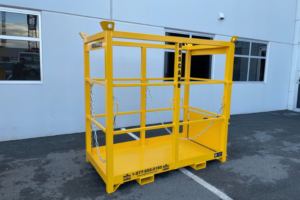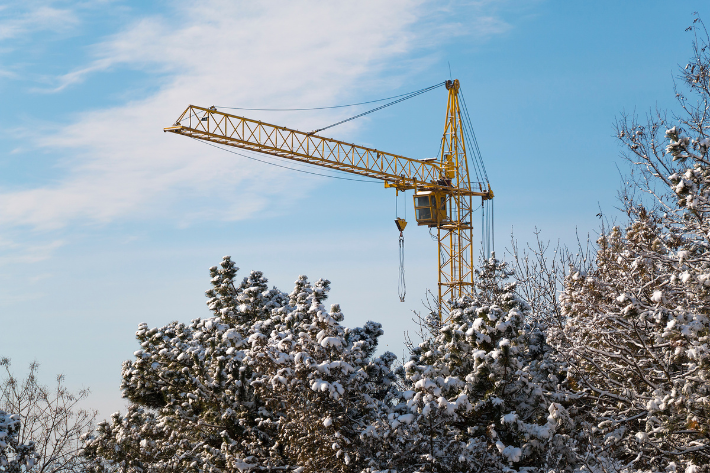Winter’s arrival signals a critical shift for construction projects, introducing unique challenges that require strategic planning and proactive measures. It’s essential for project managers to equip their sites and teams for the cold months ahead, prioritizing safety and efficiency. This guide delves into the crucial aspects of preparing your construction site for winter’s demanding conditions.
The Winter Construction Landscape

The winter season brings with it a myriad of complications for construction sites. Extreme cold can affect machinery performance, while snow and ice present serious safety hazards. These conditions not only risk worker safety but can also lead to costly project delays. Understanding and mitigating these risks is key to maintaining productivity and safety during winter construction.
Equipment Readiness
Robust equipment preparation is the foundation of winter readiness. This involves conducting thorough inspections and maintenance of all machinery, especially cranes and hoists, which are more susceptible to the cold. Implementing a rigorous winter maintenance program, including the use of antifreeze and cold-weather lubricants, can help prevent equipment failure and extend its lifespan.
Enhanced Worker Safety
Worker safety takes on increased importance in winter. It’s essential to provide your team with high-quality winter gear, including insulated gloves, non-slip boots, and thermal layers. Regularly scheduled breaks in warm areas are necessary to prevent cold stress. Additionally, comprehensive training on winter-specific safety protocols and quick response strategies for accidents should be mandatory.
Utilizing Winter-Specific Accessories
The right accessories can vastly improve winter work conditions. These might include heated trailers for break areas, non-slip mats for icy surfaces, and specialized tools designed for cold weather use. Accessories, like covered storage areas for materials, can protect against snow and ice, ensuring that work can continue even in adverse weather.
Spotlight on Innovative Solutions
Innovative solutions, such as portable heating systems, can play a crucial role in winter construction. For instance, portable propane heaters are effective in maintaining a comfortable temperature on-site. Innovative products like the Bigfoot Crane Company’s propane bottle carriers give you the ability to safely transport propane bottles on-site. Additionally, temporary enclosures can help shield work areas from the elements, enabling continued progress in various weather conditions.

Tower Crane Safety in Winter
Tower cranes, given their height and exposure, are especially susceptible to the adverse conditions of winter. Ensuring their safe and efficient operation during these months requires a multifaceted approach:
Regular Maintenance and Inspections
The cornerstone of tower crane safety in winter is rigorous and frequent maintenance. This includes checking for ice accumulation, which can add unexpected weight and disrupt the balance of the crane. Inspections should also focus on hydraulic systems and other mechanical components that are prone to malfunctioning in low temperatures.
Wind Speed Monitoring and Management
Winter often brings higher winds, which can be hazardous for tower crane operations. It’s vital to have a reliable system to monitor wind speeds continuously. Operations should be halted if wind speeds exceed safe operational limits, as defined by the crane manufacturer and safety guidelines.
Heating Systems for Operator Cabins
Providing heating systems in operator cabins is not just a comfort issue; it’s a safety measure. Warm conditions help maintain operator alertness and prevent hypothermia, ensuring that they can react quickly and effectively to any potential hazards.
Emergency Planning and Response Procedures
Establishing clear emergency procedures for winter-related incidents is crucial. This includes protocols for rapid response in case of mechanical failures due to cold, strategies for quick de-icing, and evacuation procedures in extreme weather.
By addressing these key areas, construction projects can significantly enhance the safety and reliability of tower crane operations during the challenging winter months. This proactive approach not only ensures compliance with safety standards but also contributes to the smooth and uninterrupted progress of construction activities.
Planning and Adaptation
Effective winter construction management requires a blend of advanced planning and the ability to adapt to changing conditions. This includes monitoring weather forecasts closely and being prepared to adjust work schedules and strategies accordingly. Developing a winter-specific project plan, with built-in contingencies for weather-related delays, can help ensure that projects stay on track.
FAQs
How can we effectively prepare construction equipment for winter?
Preparing construction equipment for winter involves conducting thorough inspections, performing necessary maintenance, and using antifreeze and cold-weather lubricants. Regular checks for any signs of wear and tear due to the cold weather are also important.
What are the best practices for ensuring worker safety in winter?
Best practices for worker safety include providing appropriate winter gear (like insulated gloves and non-slip boots), enforcing regular breaks in warm areas to prevent cold stress, and conducting training sessions on how to safely navigate winter-specific hazards.
What kind of winter-specific accessories should we consider for our construction site?
Consider accessories like heated trailers for breaks, non-slip mats for icy surfaces, covered storage areas for materials, and specialized tools designed for cold weather. These accessories help maintain safety and efficiency on the site.
Are there innovative solutions for heating construction sites during winter?
Yes, innovative solutions such as portable propane heaters and temporary heated enclosures can be effective in keeping construction sites operational and comfortable during the cold months.
How important is weather monitoring and planning in winter construction?
Weather monitoring and planning are crucial in winter construction. Staying informed about upcoming weather conditions allows for timely adjustments in work schedules and strategies, helping to minimize delays and safety risks.
Conclusion
Preparing for winter construction is a comprehensive endeavor, encompassing everything from machinery maintenance to worker safety and the strategic use of winter-specific accessories and technologies. A proactive approach, focused on preparation and adaptation, is crucial for navigating the challenges of winter construction. By embracing these strategies, construction projects can not only endure but also excel during the winter months, ensuring safety, efficiency, and continuity.


